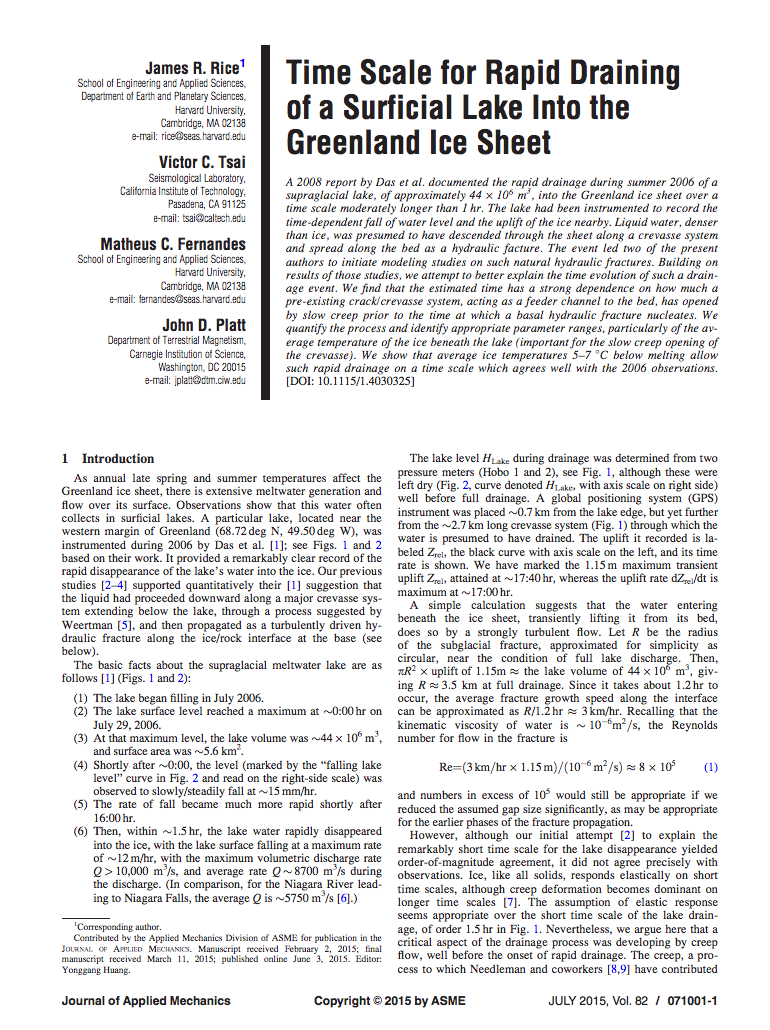Time Scale for Rapid Drainage of a Surficial Lake into the Greenland Ice Sheet
doi:10.1115/1.4030325
Abstract
A 2008 report by Das et al. documented the rapid drainage during summer 2006 of a supraglacial lake, of approximately  , into the Greenland ice sheet over a time scale moderately longer than 1 hr. The lake had been instrumented to record the time-dependent fall of water level and the uplift of the ice nearby. Liquid water, denser than ice, was presumed to have descended through the sheet along a crevasse system and spread along the bed as a hydraulic facture. The event led two of the present authors to initiate modeling studies on such natural hydraulic fractures. Building on results of those studies, we attempt to better explain the time evolution of such a drainage event. We find that the estimated time has a strong dependence on how much a pre-existing crack/crevasse system, acting as a feeder channel to the bed, has opened by slow creep prior to the time at which a basal hydraulic fracture nucleates. We quantify the process and identify appropriate parameter ranges, particularly of the average temperature of the ice beneath the lake (important for the slow creep opening of the crevasse). We show that average ice temperatures 5–7
, into the Greenland ice sheet over a time scale moderately longer than 1 hr. The lake had been instrumented to record the time-dependent fall of water level and the uplift of the ice nearby. Liquid water, denser than ice, was presumed to have descended through the sheet along a crevasse system and spread along the bed as a hydraulic facture. The event led two of the present authors to initiate modeling studies on such natural hydraulic fractures. Building on results of those studies, we attempt to better explain the time evolution of such a drainage event. We find that the estimated time has a strong dependence on how much a pre-existing crack/crevasse system, acting as a feeder channel to the bed, has opened by slow creep prior to the time at which a basal hydraulic fracture nucleates. We quantify the process and identify appropriate parameter ranges, particularly of the average temperature of the ice beneath the lake (important for the slow creep opening of the crevasse). We show that average ice temperatures 5–7  below melting allow such rapid drainage on a time scale which agrees well with the 2006 observations.
below melting allow such rapid drainage on a time scale which agrees well with the 2006 observations.

